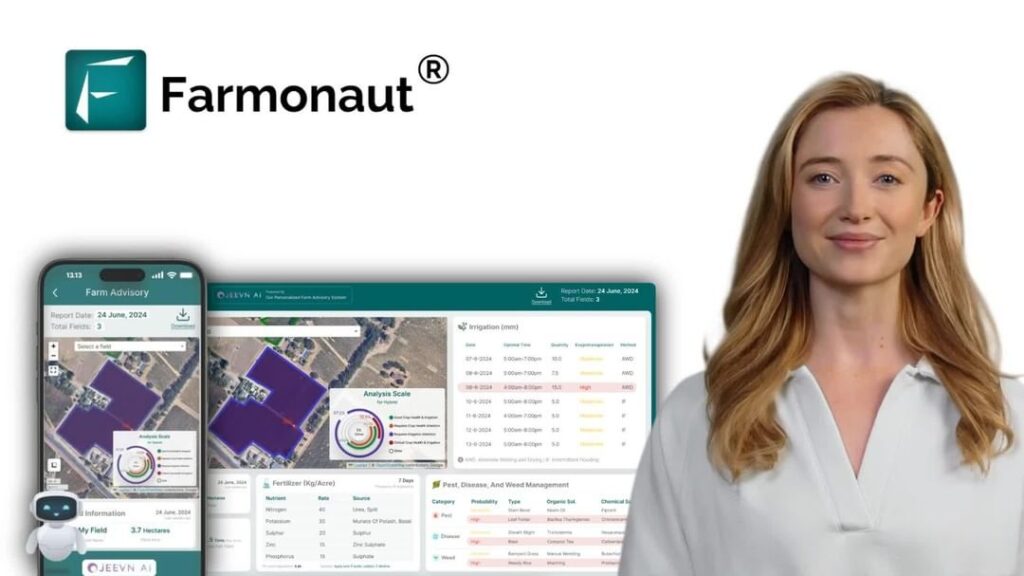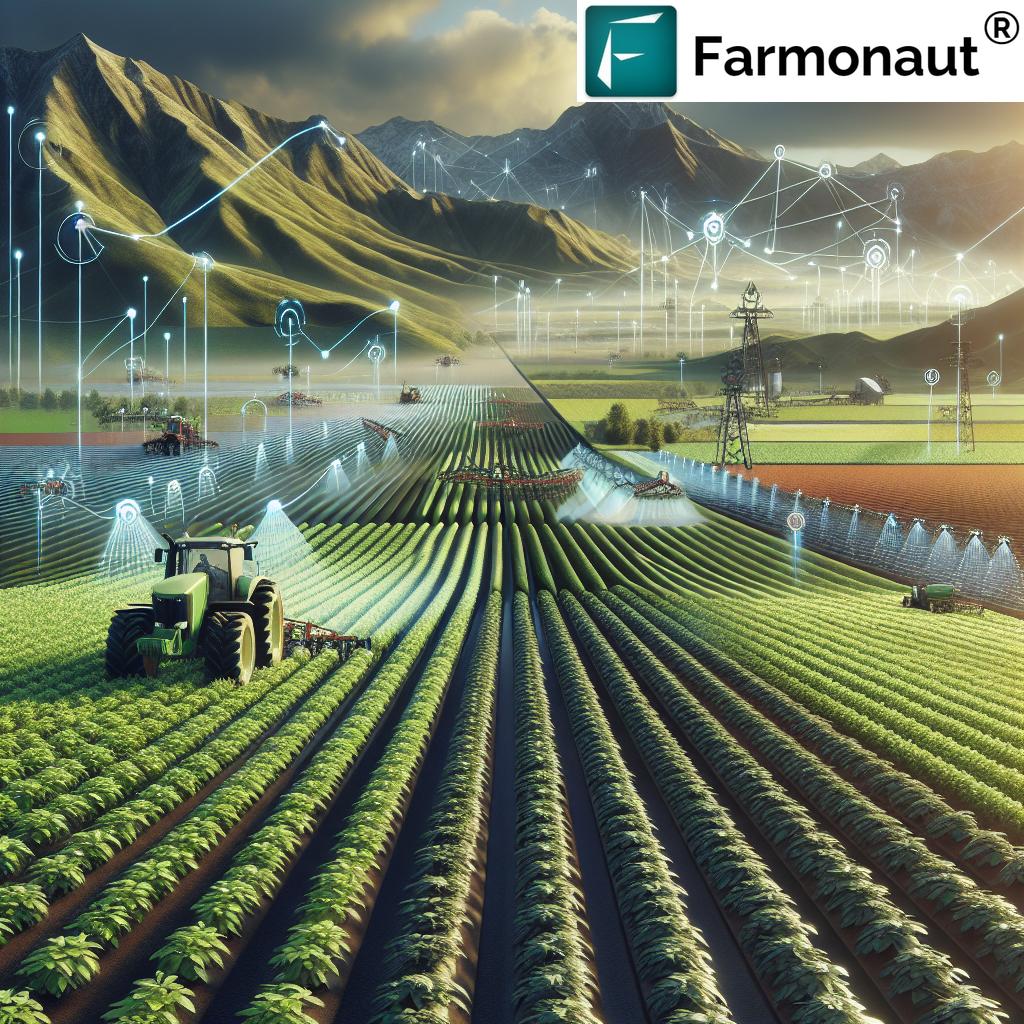Improved Farming Techniques & Technology for 2025 Agriculture: Innovations, Sustainability, and the Future of Food Production
“By 2025, precision agriculture technologies are projected to increase crop yields by up to 25% globally.”
Introduction
The agriculture sector in 2025 is experiencing a transformative era. As global challenges—such as population growth, climate change, soil degradation, and resource scarcity—intensify, improved farming techniques and advanced technologies are increasingly essential for maintaining sustainable, efficient, and resilient agricultural systems. From precision agriculture and sophisticated soil improvement techniques to automation and eco-friendly green farming techniques, every stage of food production is rapidly evolving. These innovations are not only ensuring food security for a growing population but are also revolutionizing how food is grown, livestock is managed, and natural resources are stewarded.
In this comprehensive guide, we will delve deeply into the most important improved farming techniques and improved farming technology shaping agriculture in 2025. We will also explore critical soil improvement techniques in agriculture, cutting-edge green solutions, and livestock innovations like modern pig farming techniques. Throughout, we will emphasize how data, sustainability, and integrated technologies are at the forefront of agricultural evolution—offering actionable strategies for farmers, agronomists, and decision-makers worldwide.
The Significance of Improved Farming Techniques in 2025
The drive to increase agricultural productivity sustainably while reducing environmental impact is more urgent than ever. Modern agriculture must optimize crop production, protect soil health, and use water, fertilizers, and pesticides judiciously to address the needs of a growing global population. Improved farming techniques and technologies allow:
- Efficient resource management: Using technologies to monitor and optimize the use of water, nutrients, and land
- Reduction of environmental impact: Minimizing waste, improving soil fertility, and combating climate change
- Yield improvement: Boosting crop yields and livestock productivity through precision and data-driven solutions
- Sustainable practices: Supporting ecosystem health, biodiversity, and organic farming methods
- Food security: Ensuring consistent food production and resilience against unpredictable weather and climate patterns
The following sections will outline how each of these targets is being achieved through concrete innovations and best practices.
Modern Farming Techniques: Precision Agriculture and Sustainability
Modern improved farming techniques are driven by technological advances that integrate precision, automation, and sustainability. Precision agriculture has become central to modern farming, optimizing every aspect of crop production using data-driven insights.
Precision Agriculture: Data-Driven Crop Management
- Satellite Imagery & Drones: Advanced monitoring using satellite imagery and drones provides real-time, high-resolution information on crop health, soil moisture, nutrient levels, and pest infestations. This allows precise interventions, reducing waste and minimizing the use of synthetic fertilizers and pesticides.
- IoT Sensors: Smart sensors embedded in fields continuously track water levels, soil pH, temperature, and more. This granular information enables automated irrigation and fertilizer application, optimizing input and enhancing efficiency.
- Variable Rate Application: By using field data and predictive analytics, farmers can apply water, nutrients, and protection products judiciously, delivering exactly what’s needed to each area—no more, no less.
These techniques result in:
- Reduced input costs and environmental impact
- Higher yields and productivity
- Better resource utilization and sustainability
- Improved farmers’ decision-making and profitability
Traditional yet Evolving Practices: Crop Rotation & Intercropping
While precision and automation grab headlines, traditional methods such as crop rotation and intercropping remain vital improved farming techniques. They play a critical role in soil improvement techniques agriculture by:
- Preventing pest cycles and reducing disease build-up
- Enhancing soil fertility and organic matter through diversity
- Stabilizing yield over time by rotating crops that demand different nutrients
- Mixed cropping and intercropping help sustain land productivity and encourage biodiversity
Soil Improvement Techniques: Foundation of Sustainable Agriculture
In 2025, soil improvement techniques agriculture have gained unprecedented traction. Healthy soil is the foundation of productive farming, directly influencing sustainability, water retention, and crop yields. Addressing soil degradation, enhancing fertility, and promoting live soil ecosystems are critical.
Biochar Application: Sequestering Carbon, Enhancing Soil Health
- Biochar is a stable, carbon-rich form of charcoal produced from agricultural waste. When incorporated into soil, it improves water retention, enhances nutrient-holding capacity, and aids in sequestering carbon.
- Applying biochar combats land degradation and helps reduce overall carbon footprints in agriculture.
Cover Cropping: Preventing Erosion and Enhancing Biodiversity
- Cover crops, such as legumes or grasses, are planted during the off-season to prevent soil erosion, enhance microbial activity, and replenish nitrogen
- They contribute to maintaining soil organic matter, supporting a healthy soil ecosystem naturally
- Mixed with composting and green manures, cover cropping eliminates the need for heavy reliance on synthetic fertilizers
The focus is on nature-based solutions for soil improvement techniques agriculture to sustain productivity over generations.
“Over 60% of farms are expected to adopt advanced soil improvement techniques by 2025 for sustainable food production.”
Composting & Green Manures: Natural Soil Enrichment
- Compost and green manures introduce organic matter and nutrients into soil without relying heavily on commercial fertilizers
- These practices boost microbial diversity, improve soil structure, and maintain soil fertility year after year
Advanced Farming Technology: Automation, Monitoring, and Efficiency
The dawn of 2025 has seen the mainstreaming of advanced farming technology—integrating automation, AI, and IOT across small and large-scale agricultural systems. These technologies are instrumental in increasing efficiency, reducing waste, and facilitating data-driven, sustainable food production.
Automation in the Field: Robotics and Smart Equipment
Autonomous tractors, robotic planters, and harvesters are now widely available, drastically reducing labor shortages and increasing working precision. These machines optimize workload and reduce input waste, adapting to specific soil and crop requirements.
- Robotic harvesters pick fruits and vegetables at the optimal time, improving yield quality and minimizing losses
- Automated irrigation systems use real-time moisture data for water conservation and crop protection
Maximize your farm’s intelligence using satellite-based AI technologies:



For agricultural developers, integrate satellite-powered agritech easily with our robust API and developer docs — unlocking data for precision agriculture, green farming techniques, and beyond.
Artificial Intelligence: Predictive Planning & Decision Support
- AI-powered decision support systems analyze weather predictions, soil data, and market trends—advising farmers on optimal sowing and harvesting times to minimize risk and maximize profit
- These systems help in monitoring pest infestations, scheduling fertilizer applications, and forecasting yields
- Farmonaut’s Jeevn AI Advisory System uses satellite data to deliver actionable guidance for field management
Vertical Farming & Controlled-Environment Agriculture (CEA)
Vertical farming and CEA offer year-round production with minimal resource use, making them a powerful solution for urban areas and places with arable land scarcity. Highlights include:
- Stacked crop systems using LED lighting and hydroponics optimize plant growth vertically, reducing land demand
- Controlled temperature, humidity, and CO2 levels enable precise crop management
- Significant reductions in water, pesticides, and nutrient inputs compared to traditional field agriculture
Key Advanced Farming Techniques & Technologies in 2025 (Comparative Table)
| Technique/Technology | Estimated Adoption Rate (2025, %) | Main Benefits | Technology Requirements | Estimated Yield Improvement (%) | Sustainability Impact |
|---|---|---|---|---|---|
| Precision Agriculture | 65 | Reduced input waste, improved yield, better resource management | Satellite/drone imagery, IoT sensors, data analytics | 15–25 | High |
| AI-powered Soil Monitoring | 55 | Real-time soil health insights, targeted interventions | AI platforms, soil sensors, cloud software | 10–20 | High |
| Drone-based Crop Surveillance | 50 | Rapid pest detection, precise spraying, reduced chemical use | Drones with sensors/cameras, software suites | 10–18 | Medium-High |
| Automated Irrigation Systems | 70 | Optimized water use, labor savings, improved drought resistance | Smart controllers, soil moisture sensors, network connectivity | 12–20 | High |
| Vertical Farming | 18 | Space and water efficiency, urban food security, year-round production | LED lighting, hydroponics/aeroponics, HVAC systems | Up to 30 | High |
Green Farming Techniques: Regenerative Approaches for a Resilient Future
Green farming techniques emphasize restoring ecosystems and balancing productivity with environmental stewardship. As the sector continues to evolve rapidly, the following regenerative methods are playing pivotal roles in ensuring agricultural sustainability by 2025:
Agroforestry: Integrating Trees, Crops, and Livestock
- Agroforestry combines the cultivation of trees alongside crops and/or livestock, which enhances overall biodiversity and creates improved farm microclimates
- Trees contribute to carbon sequestration, erosion control, and diversified farm income strategies
- The multi-purpose integration supports soil structure, nutrient cycling, and long-term farm sustainability
Organic Farming: Building Healthy Systems with Natural Inputs
- Organic farming builds soil health and enhances ecosystem balance by prioritizing natural inputs, crop diversity, and biological pest management
- Avoids synthetic fertilizers and harsh chemicals, fostering ecological sustainability
- Market and regulatory forces in 2025 continue to drive global organic food production
Water Management Innovations: Rainwater Harvesting and Drip Irrigation
- Rainwater harvesting systems capture and store rainfall for use in irrigation and livestock, critical for climate resilience and reducing water waste
- Drip irrigation delivers water directly to plant roots with maximum efficiency, a vital technology as water scarcity increases worldwide
Learn more: Explore Farmonaut’s carbon footprinting solution for automated, satellite-powered tracking of your farm’s environmental impact and carbon sequestration activities.
Innovations in Pig Farming Techniques and Sustainable Livestock Management
Pig farming techniques and allied livestock systems are undergoing vital improvements for both productivity and environmental sustainability. The integration of advanced technologies and green practices is reducing the livestock sector’s carbon footprint, while also protecting food security and animal welfare.
Precision Feeding & Smart Livestock Monitoring
- Precision feeding systems use automated feeders and AI to optimize nutrient intake and minimize waste for pigs and other livestock
- Sensors enable round-the-clock monitoring of critical animal health indicators, allowing for early intervention and reduced need for antibiotics
- Improved housing designs enhance air quality, ventilation, and overall welfare, reducing disease prevalence
Integrated Livestock-Crop Systems
- Manure from pig farming is recycled into organic fertilizer for crops—creating closed-loop systems that improve soil quality without synthetic inputs
- Breeding programs focus on robust breeds adapted to local climate conditions, supporting resilient livestock production
Discover blockchain-based traceability for your farm’s livestock and supply chain activities:
Traceability by Farmonaut improves food safety, reduces fraud, and builds consumer trust while ensuring secure record-keeping.
Farmonaut: Satellite-Driven Insights for Sustainable Agriculture
As a pioneering satellite technology company, we at Farmonaut democratize access to advanced satellite-based solutions for agriculture through web, mobile apps, and powerful APIs. Our mission is to make data-driven agricultural insights affordable and accessible, supporting improved farming techniques, soil improvement techniques agriculture, and cutting-edge technologies for growers, businesses, and governments globally.
- Satellite-Based Monitoring: We utilize multispectral satellite imagery to track crop health, soil conditions, and vegetation changes, offering actionable insights for enhanced resource management.
- Jeevn AI Advisory: Our AI-driven advisory system analyzes real-time satellite data, weather, and market signals to guide farmers’ decisions—optimizing input use, improving productivity, and supporting sustainability.
- Environmental Impact & Compliance: With carbon footprint monitoring, we help agricultural and food businesses track emissions and adopt green farming techniques—critical for meeting global sustainability standards.
- Blockchain Traceability: Our traceability solution ensures secure and transparent food supply chains, a growing necessity for both local and international trade.
- Fleet and Resource Management: With satellite-optimized fleet management tools, we help reduce costs and enhance safety in agricultural logistics and farming operations.
- Financing Made Simple: Satellite-based verification streamlines loan and insurance processing. Read more on Crop Loan and Insurance solutions supported by our technology.
- Scalable Farm Management: For enterprises and large growers, large-scale farm management apps and forest/crop plantation advisory ensures you’re always in control.
Ready to transform your farming with actionable satellite insights?



Conclusion
The agriculture sector of 2025 is on the cusp of a transformative shift, with improved farming techniques, soil improvement methods, and advanced technology working in concert to drive sustainable food production for the future. By adopting precision agriculture, biochar application, cover cropping, and green farming techniques, farmers are not only enhancing productivity but also protecting environmental health and community resilience.
With innovations such as precision feeding in pig farming, satellite-powered crop monitoring, and closed-loop nutrient cycling, agriculture is becoming smarter, more adaptable, and sustainable—capable of feeding a growing global population even amid climate change.
Ultimately, by integrating technology with ecological stewardship, the agricultural sector continues to evolve rapidly, building systems that support both current and future generations. Embracing these innovations is critical for food security, natural resource protection, and a resilient agricultural future for all.
FAQ: Improved Farming Techniques & Technology in 2025
-
What are improved farming techniques in 2025?
Improved farming techniques include precision agriculture, soil improvement practices like biochar and cover cropping, integration of automation, sensors, AI advisory systems, and sustainable water management—collectively optimizing yields, minimizing inputs, and protecting the environment. -
How are soil improvement techniques agriculture practiced today?
Key practices include using organic fertilizers, cover cropping, applying biochar, composting, implementing crop rotation, and soil testing to enhance fertility, structure, and microbial health naturally. -
What is the role of technology in improved farming technology?
Technology empowers farmers with real-time data, predictive analytics, automated machinery, and remote monitoring—leading to informed decisions, reduced resource waste, and improved productivity. -
How do green farming techniques contribute to sustainability?
Green methods such as agroforestry, organic farming, and ecologically integrated pest management restore biodiversity, sequester carbon, optimize water use, and minimize synthetic inputs for long-term farm viability. -
What are the latest innovations in pig farming techniques?
Innovations include precision feeding, health monitoring sensors, improved housing for animal welfare, nutrient recycling into crop fields, and selection of resilient pig breeds for changing climates. -
How can Farmonaut help with improved farming techniques?
We at Farmonaut provide satellite-powered analytics for crop, soil, and environmental monitoring, AI-driven agricultural advice, blockchain traceability, and resource management tools—helping farmers, agribusinesses, and governments make informed, sustainable decisions.











